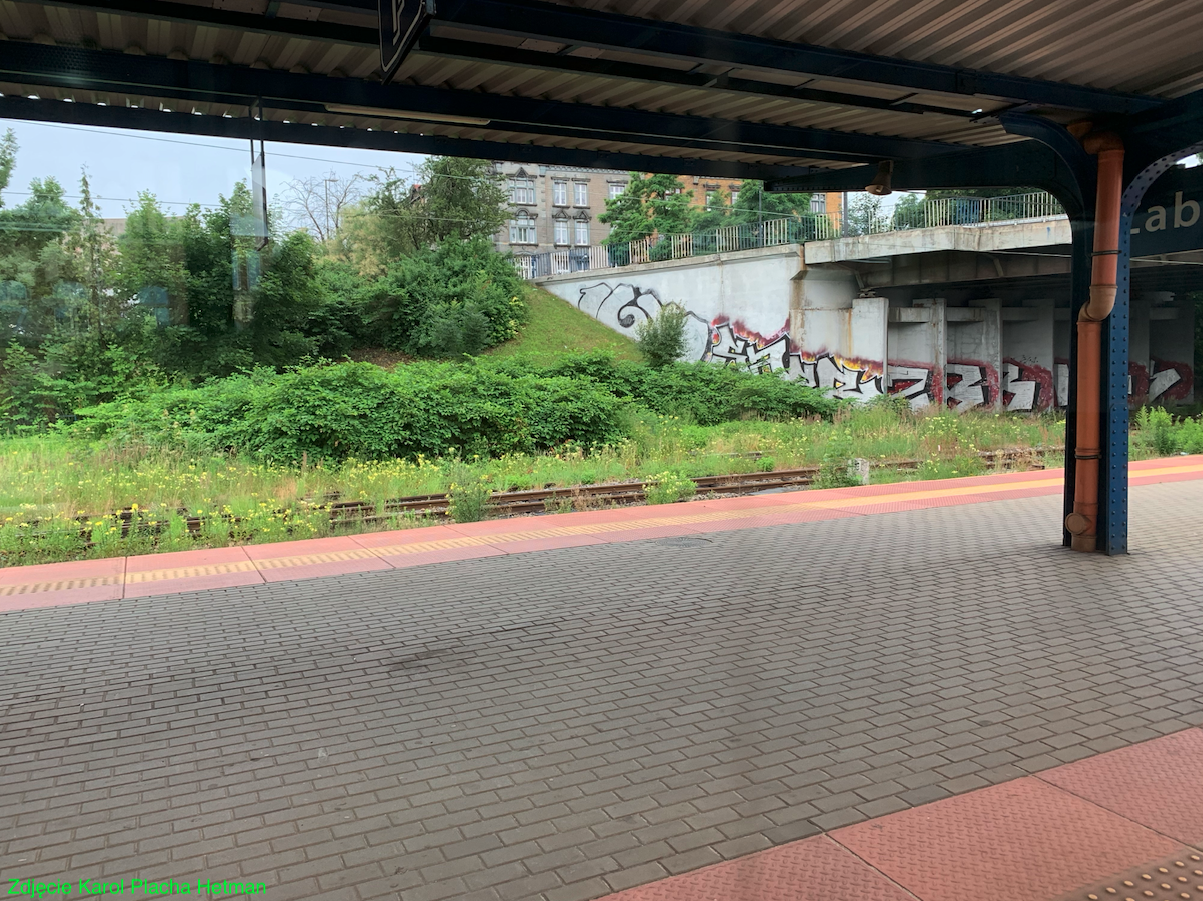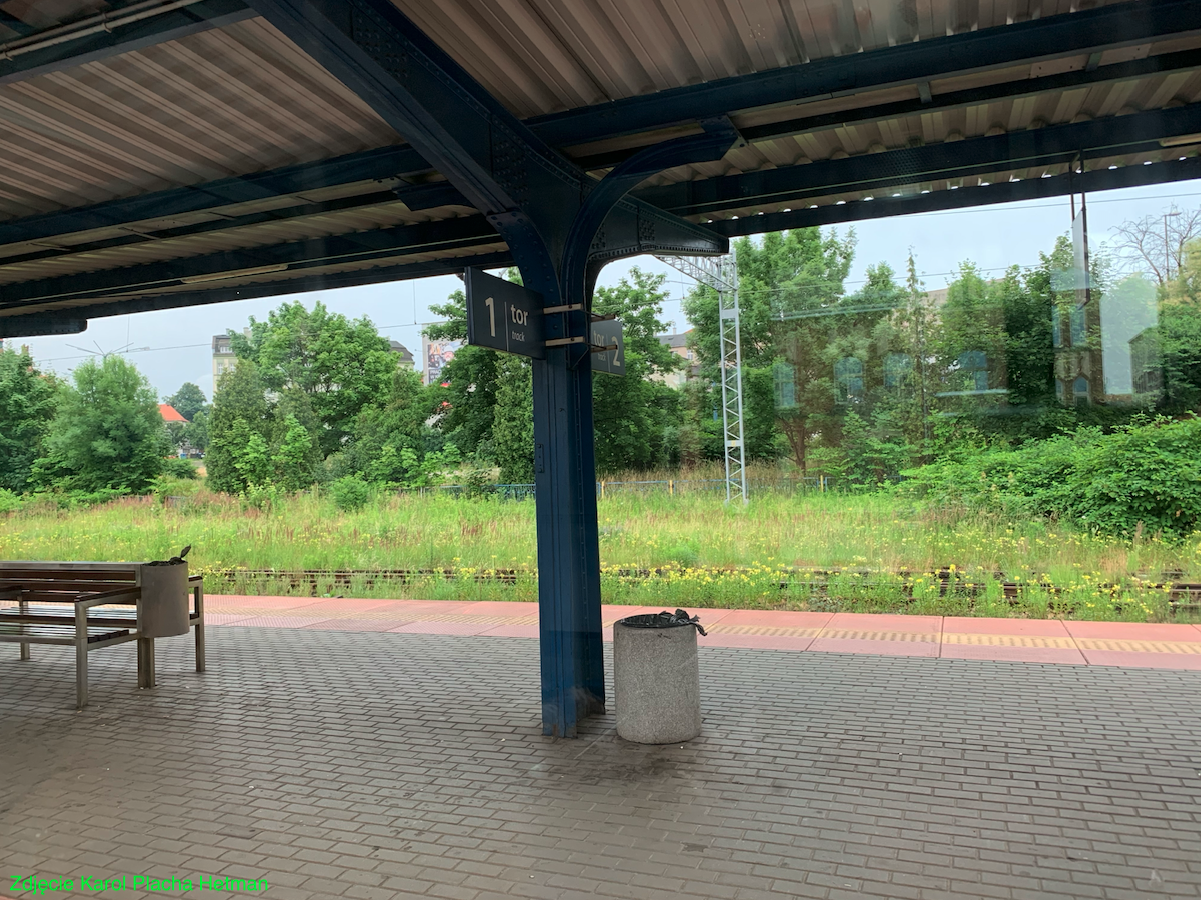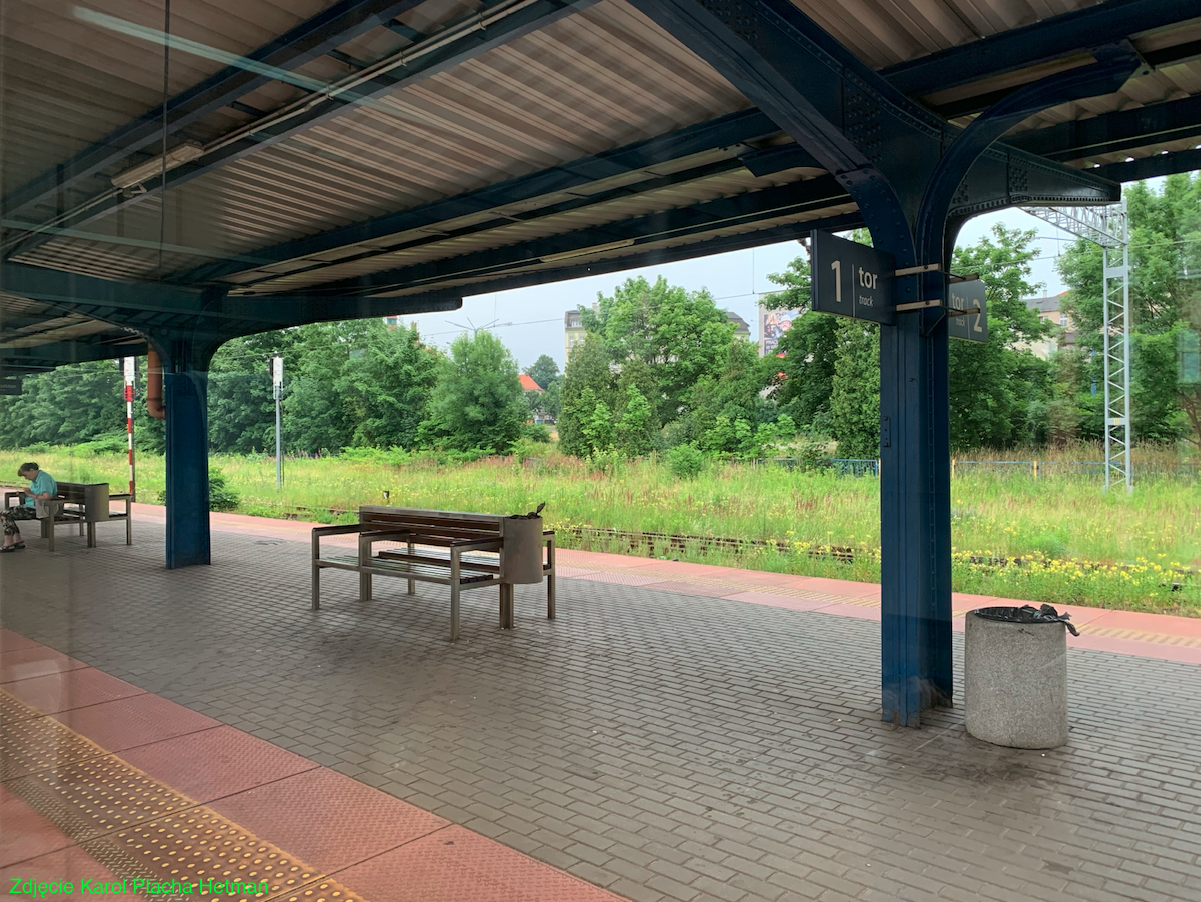Zabrze 2023-01-25
Zabrze railway station.
Geographic coordinates: 50.305N 18.787E. Elevation 252 m.



City of Zabrze.
Zabrze is a city in Poland in the Silesian Voivodeship, in the agglomeration of Upper Silesia. The Proto-Slavic settlement was founded in the 13th century. City rights were granted on October 1, 1922. The city's area is 80.4 square kilometers. The population is 155,430 inhabitants (2021). The city is located on the Kłodnica and Bytomka rivers, which are tributaries of the Oder.
For many centuries, the Slavic name Zabrze was used. Unexpectedly, at the request of the municipal council in 1914, by Prussian royal decree of February 21, 1915, the name of the town was changed from Zabrze to Hindenburg to commemorate Marshal Paul von Hindenburg, who successfully fought against the Muscovites' troops at the beginning of the Great World War. The official name of Zabrze was restored on December 1, 1945, which was confirmed at the government level by a decree of May 7, 1946.
Historically, Zabrze was located in the lands of the Duchy of Opole. In the 16th century, deposits of silver and lead ore were found here. In the 17th century, a brewery, water mills and sawmills were built here. In the 18th century, hard coal mining began here. In 1796, the first state mine was opened; Queen Louise. At that time, river canals were built here for the transport of goods. In the 19th century, further hard coal mines were opened. In 1851, the Donnersmarck steelworks were opened. In 1857, the Reden steelworks was launched and then launched; steel rope factory, glassworks, rolling mills, forge, steelworks. Then it was opened; open-hearth furnaces, coking plants, power plant.
In 1922, the city area was divided by a border. Kończyce, Pawłów and Makoszowy (apart from the mine area) became part of Poland. The remaining communes fell to the Germans. At the beginning of World War II, Zabrze was incorporated into Germanic borders. One of several branches of the Auschwitz concentration camp was established here.
On January 24, 1945, the Soviet army entered Zabrze. In February 1945, the Muscovites began deporting the inhabitants of Zabrze to labor camps in the CCCP area. 8,700 people were deported. The pseudo-liberators took away thousands of machines and devices. Only in March 1945, the Muscovites handed the city over to Polish administration. In the period 1945-1947, Poles displaced from the Polish Borderlands, occupied by the CCCP, arrived in Upper Silesia.
On April 1, 1951, the towns of Grzybowice, Mikulczyce, Rokitnica, Kończyce, Makoszowy and Pawłów were included in the city limits. In 1985, the first successful heart transplant surgery in Poland was performed in Zabrze, under the supervision of prof. Zbigniew Religa.
Zabrze was an important mining center. Coal mines were a key element of the city's economy. As a result of economic and structural transformations, many mines were closed, but the mining heritage is still present in the culture and architecture of Zabrze.
Rail transport in Zabrze.
On October 1, 1845, a section of the railway was opened; Opole - Gliwice - Zabrze - Świętochłowice. The last section Świętochłowice - Mysłowice was launched in 1846. Also in 1846, a station was built in Zabrze, which currently does not exist. In 1851, mail transport was launched on the Upper Silesian Railway route, a post office was built and the postman's office was established.
Currently, there are the following railway stations in Zabrze; Zabrze on the E30 railway line, Zabrze Biskupice, Zabrze Makoszowy, Zabrze Mikulczyce, Zabrze Północ.
Zabrze railway station.
The Zabrze railway station was opened on October 1, 1845, providing a connection with Wrocław, and in 1947, with Kraków. Regular operation of the station in Zabrze began on November 15, 1845. The station building was built in the middle of nowhere and was a typical Prussian railway building. The building houses ticket and baggage counters, a restaurant, a waiting room and railway service rooms. In front of the station there was a square where horse-drawn carriages stopped. There were four tracks on the station level; two intended for passenger service and two for freight and post. A ramp was built at the storage yard.
The area at today's Wolności Street became very attractive and hotels, restaurants, warehouses, shops and service points were built here. The owner of the railway line and station was the "Oberschlesische Eisenbahn" company, which in the following years had a significant share in the expansion of railway lines throughout Silesia. Especially the construction of railway sidings to mines, steelworks and other factories.
In the following years, traffic on railway routes increased significantly. This meant difficulties for passenger and goods traffic in the city. Therefore, along the current 3 Maja Street, a viaduct was built over the tracks. It was then above the western head of the station. As a result, another station grade with seven sidings and a marshalling hill for freight trains was built on the southern side of the station. Currently, there is a large car park in this place. Before the outbreak of the Great World War, about 15 sidings to production plants were built. Around 1910, a passenger passage was built under the tracks in the eastern part of the station. This passage allowed access to the platforms and also connected both sides of the city.
In 1922, the borders between Poland and the Germans changed. The town of Zabrze was divided. Ruda Śląska was incorporated into Poland. In this way, the station in Zabrze became a border station. The existing station building was expanded towards the east. A customs post was installed there and travelers going to Poland were checked in there. The period of the 20s and 30s of the 20th century was the time of expansion of the city center. One of the most significant projects was the reconstruction of the existing station. The then Railway Station Square was considered too small for the growing city. A plan was created to expand the station. It was supposed to be three-level. The plans were not implemented.
The station survived World War II without any damage. On January 24, 1945, Soviet troops, the alleged liberators, entered Zabrze. Property destruction, robberies and rapes began. In February 1945, the Muscovites began deporting the inhabitants of Zabrze to labor camps in the CCCP area. 8,700 people were deported. Fortunately, after two months, the Polish administration took over the authorities, which prevented further devastation of the property.
PKP had different priorities than the Prussian railways. Zabrze station lost its importance. By 1955, the locomotive shed and water tower were closed down. In the 1960s, the sidings on the southern side of the railway line and the freight station were demolished. Zabrze station became a through station for both passenger and freight traffic.
On April 13, 1959, a few minutes after 3 p.m., the viaduct over the tracks collapsed near the station, along 3 Maja Street. The disaster occurred as a result of a heavy truck entering the viaduct. The reconstruction was completed in 1962. There were no tram tracks on the viaduct anymore because the tram line was routed on a different route.
In 1964, the old station was demolished. In its place, a modern station building in the modernist style was built. The building is still operational (2024). The building was built on old foundations. It is spacious and well-lit. Inside there are ticket offices, a waiting room, toilets, a small restaurant and a luggage storage room (in the underground part). Both levels are connected by a staircase. The station opened on October 1, 1967.
At that time, the only platform was also rebuilt. Access to the platform is from a road viaduct and from an old tunnel under the tracks. In 1984, new stairs were built from the viaduct to the platform.
In the 1990s, the destruction of Polish Railways began. This tendency was also reflected at the station in Zabrze. The lower part of the station was closed. Luggage storage and the lower part of the waiting room have been closed. Various shopping booths appeared in the station hall.
Since 2001, there has been an ongoing discussion about rebuilding the station and building a shopping center here. To date (2024), the idea has not been implemented. Only ad hoc renovations were carried out. However, looking at other stations, for example Katowice, Poznań Główny, Kraków Główny; a shopping mall and a transfer center will soon be built in Zabrze. We encourage railway enthusiasts to visit the Zabrze station, even before the reconstruction, which will certainly take place.
In 2021, the station served 986,000 passengers, and in 2022, 1,423,500 and for the first time in history it exceeded one million travelers. All InterCity and Koleje Śląskie trains stop at the station. In January 2024, 136 trains departed from Zabrze per day. You could go to: Bohumin, Częstochowa, Dąbrowa Górnicza, Dąbrowa Górnicza Ząbkowice, Frankfurt/Oder, Gdynia Główna, Gliwice, Hrubieszów Miasto, Jelenia Góra, Katowice, Kołobrzeg, Kraków Główny, Lublin Główny, Olsztyn Główny, Poznań Główny, Przemyśl Główny, Racibórz, Słupsk, Szczecin Główny, Szklarska Poręba Górna, Świnoujście, Ustka, Warszawa Wschodnia, Wrocław Główny, Zakopane, Zawiercie, Zielona Góra Główna.
Written by Karol Placha Hetman
